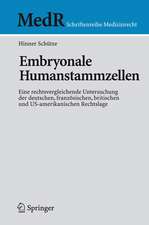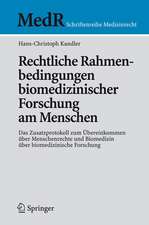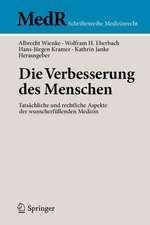The German Perfect: Its semantic composition and its interactions with temporal adverbials: Studies in Linguistics and Philosophy, cartea 78
Autor R. Musanen Limba Engleză Hardback – 31 iul 2002
| Toate formatele și edițiile | Preț | Express |
|---|---|---|
| Paperback (1) | 644.18 lei 6-8 săpt. | |
| SPRINGER NETHERLANDS – 31 iul 2002 | 644.18 lei 6-8 săpt. | |
| Hardback (1) | 646.43 lei 6-8 săpt. | |
| SPRINGER NETHERLANDS – 31 iul 2002 | 646.43 lei 6-8 săpt. |
Din seria Studies in Linguistics and Philosophy
- 15%
 Preț: 583.78 lei
Preț: 583.78 lei - 18%
 Preț: 728.43 lei
Preț: 728.43 lei - 20%
 Preț: 1918.99 lei
Preț: 1918.99 lei -
 Preț: 393.35 lei
Preț: 393.35 lei - 18%
 Preț: 1219.29 lei
Preț: 1219.29 lei - 18%
 Preț: 733.78 lei
Preț: 733.78 lei - 20%
 Preț: 563.41 lei
Preț: 563.41 lei - 20%
 Preț: 509.80 lei
Preț: 509.80 lei - 15%
 Preț: 645.28 lei
Preț: 645.28 lei - 18%
 Preț: 723.69 lei
Preț: 723.69 lei - 18%
 Preț: 1552.05 lei
Preț: 1552.05 lei - 18%
 Preț: 953.65 lei
Preț: 953.65 lei - 15%
 Preț: 647.27 lei
Preț: 647.27 lei - 18%
 Preț: 959.98 lei
Preț: 959.98 lei - 18%
 Preț: 1832.39 lei
Preț: 1832.39 lei - 15%
 Preț: 646.30 lei
Preț: 646.30 lei - 18%
 Preț: 953.03 lei
Preț: 953.03 lei - 18%
 Preț: 1224.06 lei
Preț: 1224.06 lei - 18%
 Preț: 952.09 lei
Preț: 952.09 lei -
 Preț: 394.71 lei
Preț: 394.71 lei - 18%
 Preț: 942.01 lei
Preț: 942.01 lei - 18%
 Preț: 947.50 lei
Preț: 947.50 lei - 18%
 Preț: 955.70 lei
Preț: 955.70 lei - 18%
 Preț: 1223.43 lei
Preț: 1223.43 lei - 15%
 Preț: 653.00 lei
Preț: 653.00 lei - 15%
 Preț: 645.28 lei
Preț: 645.28 lei -
 Preț: 391.99 lei
Preț: 391.99 lei - 18%
 Preț: 942.01 lei
Preț: 942.01 lei
Preț: 646.43 lei
Preț vechi: 760.50 lei
-15% Nou
Puncte Express: 970
Preț estimativ în valută:
123.69€ • 129.61$ • 102.26£
123.69€ • 129.61$ • 102.26£
Carte tipărită la comandă
Livrare economică 11-25 aprilie
Preluare comenzi: 021 569.72.76
Specificații
ISBN-13: 9781402007194
ISBN-10: 1402007191
Pagini: 292
Ilustrații: XI, 275 p.
Dimensiuni: 160 x 240 x 21 mm
Greutate: 0.59 kg
Ediția:2002
Editura: SPRINGER NETHERLANDS
Colecția Springer
Seria Studies in Linguistics and Philosophy
Locul publicării:Dordrecht, Netherlands
ISBN-10: 1402007191
Pagini: 292
Ilustrații: XI, 275 p.
Dimensiuni: 160 x 240 x 21 mm
Greutate: 0.59 kg
Ediția:2002
Editura: SPRINGER NETHERLANDS
Colecția Springer
Seria Studies in Linguistics and Philosophy
Locul publicării:Dordrecht, Netherlands
Public țintă
ResearchCuprins
1: Introduction.- 1. Outline.- 2. Tense and aspect.- 3. Contexts and temporal specifications.- 4. The tenses in German.- 5. Temporal interpretation and individuals.- 6. A formal semantic implementation of tense and aspect.- 7. Conclusion.- 2: The Semantics Of The Present Perfect.- 1. Perfectly compositional.- 2. The morphosyntactic source of the anteriority component.- 3. The stativity of perfect constructions.- 4. Identifying the synchronic anteriority component: an optimality approach to focus effects.- 5. Conclusion, formal semantic account, and refinements.- 3: The Meaning Effects Of The Present Perfect.- 1. The problem.- 2. The effects of the present perfect.- 3. Previous accounts.- 4. How pragmatic principles operate on the semantics.- 5. Why past tense and present perfect often can be substituted by each other.- 6. Completedness effects.- 7. Indefiniteness effects.- 8. Present relevance.- 9. Stage-level-to-individual-level switches: Mozart’s lung disease.- 10. Individual-level-to-stage-level switches: temporary intelligence.- 11. English vs. German: Einstein and Princeton.- 12. Conclusion.- 4: Types Of Temporal Adverbials.- 1. Introduction.- 2. Quantificational adverbials, position adverbials, and duration adverbials.- 3. Duration adverbials and situation types.- 4. Distinguishing position and duration adverbials.- 5. The interpretation of nonquantificational temporal adverbials.- 5: Interactions With Temporal Adverbials.- 1. Introduction.- 2. The formal integration of temporal adverbials in semantic representations.- 3. Temporal adverbials on the tense level, aspect level, and participle level.- 4. Temporal adverbials as frame-setting modifiers.- 5. Temporal adverbials as restrictors of nontemporal quantifiers.- 6. Temporal adverbials below the participlelevel.- 7. Temporal adverbials with quantificational and nonquantificational components.- 8. Iteration of adverbials on a single level.- 9. On universal perfect readings.- 10. Remarks concerning negation.- 11. Summary.- 6: The Contribution Of Particular Adverbials.- 1. Introduction.- 2. Seit-adverbials: ‘up-to-TT’ interpretations.- 3. Extended now theories of perfect constructions: apparent evidence by up-to-TT-adverbials and why it is misleading.- 4. Existential and universal perfect readings.- 5. Temporal bis-adverbials: ‘TT-independent’ interpretations.- 6. Temporal in-adverbials.- 7. Adverbials of the type x-lang.- 8. Conclusion.- 7: Temporal Subordinate Clauses, Conjunctions, And Matrix Clauses.- 1. Introduction.- 2.’ simultaneity’ between main clause and subclause.- 3. Time parameters of the main clause before time parameters of the subclause.- 4. Time parameters of the main clause after time parameters of the subclause.- 5. Durational subclauses: solange (‘as long as’).- 6. Conclusion.- 8: On The Syntax Of Temporal Adverbials.- 1. Introduction.- 2. The unmarked surface order of temporal adverbials of a single level.- 3. Preposing of temporal adverbials in English.- 4. ‘Topicalization’ of temporal adverbials in German.- 5. Scrambling of temporal adverbials.- 6. Summary: base positions and surface positions of temporal adverbials.- 9: Conclusion.- References.
Recenzii
From the reviews:
"This book provides an in-depth overview of perfect constructions in German and offers an extensive account of their uses from the perspective of a formal semantic framework. It also considers many pragmatic factors as well as particular characteristics of German Syntax…A thorough conclusion, list of references, and index make this work a useful manual for (advanced) students and scholars."(Linde Roels, LANGUAGE, volume 81, issue 3, page 784, 2005)
"This book provides an in-depth overview of perfect constructions in German and offers an extensive account of their uses from the perspective of a formal semantic framework. It also considers many pragmatic factors as well as particular characteristics of German Syntax…A thorough conclusion, list of references, and index make this work a useful manual for (advanced) students and scholars."(Linde Roels, LANGUAGE, volume 81, issue 3, page 784, 2005)
Caracteristici
Includes supplementary material: sn.pub/extras

















